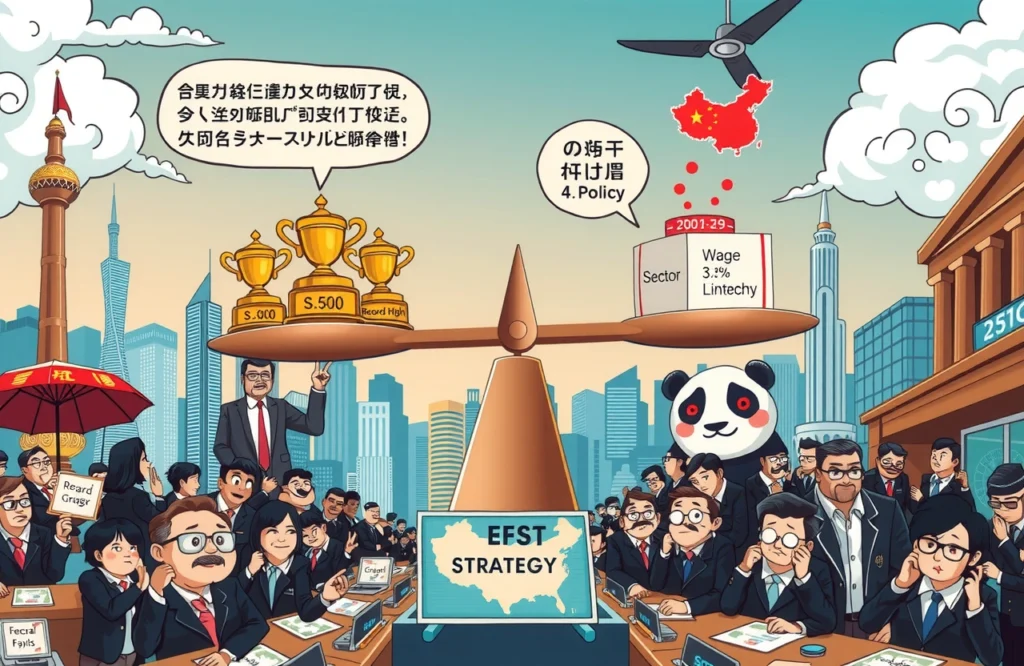The Countdown to Delisting Begins
Tianmao Group (000627.SZ), the insurance-focused conglomerate controlled by prominent investor Liu Yiqian (刘益谦), faces imminent delisting after failing to disclose mandatory financial reports. On July 6, 2025, the Shenzhen Stock Exchange announced the company would resume trading on July 8 with “*ST Tianmao” designation – a scarlet letter signaling delisting risk. This follows the company’s stock suspension since May 6 and an ongoing China Securities Regulatory Commission (CSRC) investigation into the reporting delinquency.
With trading set to resume under strict 5% daily price movement limits, Tianmao Group has until September 6 to file its overdue 2024 annual report and 2025 first-quarter statements. Official filings indicate ongoing “verification and supplementary improvements” of financial information, raising concerns among regulators and 120,000 shareholders about the true financial health beneath the Tianmao Group delisting crisis.
Key Developments at a Glance
– Tianmao Group faces forced delisting if financial disclosures aren’t filed by September 6
– Controlling shareholder Liu Yiqian (刘益谦) suffers RMB 1.4 billion ($193 million) paper loss
– Fund manager slashes valuation by 90% to RMB 0.27/share amid transparency concerns
– Subsidiary Guohua Life Insurance records RMB 21.8 billion surge in claim payouts
– 12,000 retail investors face potential total losses with limited recourse options
Financial Earthquake for a Capital Titan
Liu Yiqian (刘益谦), ranked #678 on the Hurun Global Rich List with $4.8 billion in wealth, directly controls 66% of Tianmao Group through personal holdings and his Shanghai New Equity Investment group. Historical disclosures reveal Liu’s total investment exceeding RMB 10.3 billion ($1.42 billion), now valued below RMB 9 billion ($1.24 billion) at the suspended price of RMB 2.74/share.
The Domino Effect Across Liu’s Empire
Cross-analysis reveals collateral damage spreading through the “New Equity System”: Liu’s flagship investment firm suffered 50% value erosion on its RMB 10 billion investment in Changjiang Securities (000783.SZ), where its stake dwindled to 14.89% as Hubei state-backed entities gained control in March 2025. Simultaneously, Guohua Life Insurance divested $34.5 million in New World Department Store holdings at significant losses.
The Liquidation Gambit
Financial pressures prompted unprecedented moves: Liu auctioned prestigious artworks including “Spring Landscape” ($13 million) in late 2023 through Sotheby’s Hong Kong’s “The Dragon’s Path” collection sale. Regulatory databases confirm parallel moves including Guohua Life’s $36 million exit from retail investments since December 2024 – actions signaling cash preservation strategies ahead of the Tianmao Group delisting reckoning.
Anatomy of the Reporting Failure
Shenzhen Stock Exchange bylaws impose strict deadlines for periodic disclosures under Chapter 11 of Listing Rules. Failure to publish audited annual reports within four months of fiscal year-end triggers automatic suspension. The CSRC investigation expressly concerns “suspected violation” of securities reporting regulations – typically charged under Article 193 of China’s Securities Law.
Audit Roadblocks and Valuation Collapse
Corporate filings reference “verification challenges” regarding insurance subsidiary data – specifically concerning Guohua Life’s RMB 80.3 billion ($11.1 billion) portfolio in trusts and credit investments flagged by auditors for inadequate transparency. On July 1, Shanghai-based China Universal Asset Management revalued Tianmao holdings at RMB 0.27/share – a 90% haircut equivalent to liquidation valuation – anticipating severe asset impairment.
The Investor Fallout
Market data confirms catastrophic retail exposure: the 12,000 shareholders held average positions worth RMB 103,100 ($14,200) as of May 31, 2025. Now trapped by the Tianmao Group delisting process, average holders face near-total capital erosion according to exchange historical data on delisted insurers like Anbang Property & Casualty.
Recourse Mechanisms
According to Shanghai Haichang Yongtai Law Firm partner Sun Yuhao (孙宇昊), investors may file claims if CSRC determines willful disclosure violations: “Shareholders purchasing between violation commencement date and disclosure date can initiate claims within three years after regulatory confirmation”. Evidence requirements include brokerage statements proving stock ownership during violation periods.
-
– Required documentation: Trading records, shareholder certificates, bank statements
– Collective action mechanisms: Representative litigation under CCP Articles 53-54
– Likelihood threshold: Regulator-confirmed major disclosure violations
Guohua Life’s Downward Spiral
The insurance arm generating 90% of Tianmao Group revenue presents systemic alarms: Guohua Life’s premiums plummeted 13% YoY to RMB 34.6 billion ($4.77 billion) in 2024 amid solvency ratio deterioration. Notable risk indicators emerged:
Claims Explosion
Third-quarter 2024 financials submitted to CBIRC show disability/life claims surged 1,620% year-on-year to RMB 218.2 billion ($30.1 billion) – equivalent to 65% of reported revenue. According to former China Investment Association executive Zhi Peiyuan, this indicates systemic mismatches between long-term policy liabilities and depreciating fixed-income assets.
The Yield Curve Crisis
Regulatory filings directly attribute RMB 75 billion ($10.3 billion) impairments to China’s declining sovereign yields: The 750-day treasury curve referenced for insurance reserves fell 62 basis points since 2022 per ChinaBond indexes. Each 10bp drop typically requires 0.5-0.8% reserve increases for life insurers – pressuring already-thin margins.
The Path Forward
With Tianmao Group delisting proceedings commencing, SMEs investors face historical parallels: Of China’s 47 delisted insurers since 2019, 73% either dissolved permanently or listed on the National Equities Exchange and Quotations “Third Board” with less than 5% average recovery rates.
Restructuring Prospects
Industry analysts give Tianmao Group less than 20% survival probability due to concurrent CSRC investigation barriers. Successful debt restructuring would require:
-
– Independent solvent asset segregation
– Regulatory waiver of reporting probes
– Minority shareholder approval exceeding 67%
– State-owned AMC participation
A Cautionary Blueprint
The 2019 Anbang Insurance restructuring provides instructive lessons: Following RMB 2 trillion ($276 billion) bailout, regulators prescribed premium caps and prohibited equity investments – constraints that undermined Guohua Life’s expansion strategy. With bond yields near-record lows, Tianmao Group resembles structurally impaired insurers rather than operationally recoverable entities.
The Regulatory Landscape
Broader clampdowns overshadow Tianmao Group delisting: CBIRC filings show insurer interventions surged 40% YoY in Q2 2025 targeting:
-
– Non-compliant product maturity structures
– Loan collateralized with investment certificates
– Trust channel exposure exceeding 20% thresholds
– Derivatives investments masking capital adequacy
New-phase regulations now require quarterly validation of insurers’ reserving methodologies – precisely the disclosures Tianmao Group withheld.
Where Do Stakeholders Go From Here?
The Tianmao Group saga highlights structural weaknesses in China’s insurance investment model: Declining yields amplified by inadequate hedging expose systemic risks requiring regulatory countermeasures. Forward-looking solutions should implement duration-matching algorithms, portfolio immunization buffers, and scenario stress testing.
For tens of thousands of shareholders, documentation preservation remains critical pending CSRC investigation outcomes. Legal precedent demonstrates viable collective actions – the Nanjing Intermediate People’s Court approved RMB 412 million ($57 million) settlement for Kangmeier Bio investors in a comparable reporting failure case.
What financial regulatory reforms could prevent similar Tianmao Group delisting crises? We welcome specialist perspectives on insurance governance and retail investor safeguards. Share your analysis below.




